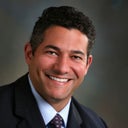Posted underFacelift q&a
After a face and neck lift six months ago, why is one of my platysmal muscles still very pronounced?
I had a face and neck lift six months ago. My one platysmal muscle looks very good. It is not really visible when chewing or moving my neck, and I have a nice contour to the neck. The other muscle, however, is still very pronounced. It really sticks out, especially when I put my head back. My doctor did inject that one muscle with steroids back in October. I am not going to see him again until February. Can anyone explain what is happening with this one muscle? Thank you.
Answers (13)
From board-certified doctors and trusted medical professionals








